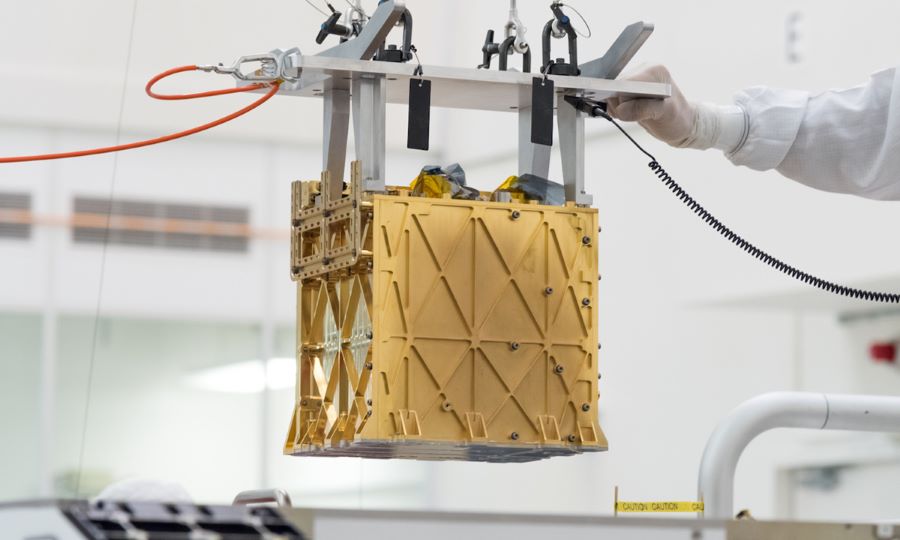NASA technology generated oxygen on Mars
A scientific instrument called MOXIE (Mars Oxygen In-Situ Resource Utilization Experiment), which is present onboard NASA’s Perseverance rover roaming Mars, has produced 122 grams of oxygen on the red planet since landing there in 2021.
Although this is not a big volume, MOXIE’s designers at the Massachusetts Institute of Technology have reasons to celebrate – during 16 attempts it generated more oxygen than they had expected – just enough for a small dog to breathe for ten hours. At its most efficient, the instrument was able to release 12 grams of oxygen an hour in Mars’ thin atmosphere – twice as much as NASA’s original goal – at 98% purity or better, the agency said in a press release.

MOXIE.
Credit: NASA
On its 16th run, on 7 August, the instrument made 9.8 grams of oxygen. MOXIE successfully completed all of its technical requirements and was operated at a variety of conditions throughout a full Mars year, allowing the instrument’s developers to learn a great deal about the technology.
The experiment is a proof-of-concept that could lay the groundwork for future efforts of colonizing Mars and Moon.
“MOXIE’s impressive performance shows that it is feasible to extract oxygen from Mars’ atmosphere – oxygen that could help supply breathable air or rocket propellant to future astronauts,” NASA Deputy Administrator Pam Melroy praised the instrument. “Developing technologies that let us use resources on the Moon and Mars is critical to build a long-term lunar presence, create a robust lunar economy, and allow us to support an initial human exploration campaign to Mars.”
More to read:
Scientists could “see” the composition of Mars’ core for the first time ever
The 17-kilogram, microwave-oven-size device works by separating one oxygen atom from each carbon dioxide atom pulled from the Martian atmosphere through a complex electrochemical process. As the gases flow through the system, they are analyzed to check the purity and quantity of the oxygen produced.
The oxygen obtained in other worlds could not only serve as breathable air for future astronauts, but also be used to generate rocket propellant, thus making future trips to the red planet a lot more feasible.
The next step for NASA scientists is to create a full-scale system that would be capable of harvesting oxygen from the Martian atmosphere and liquefying it for storage.







